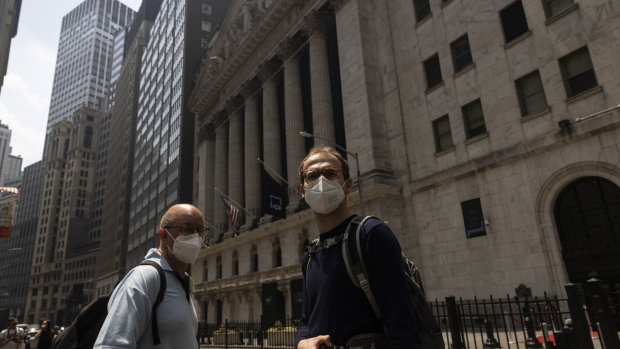Jun 10, 2023
New York and East Coast Get Reprieve From Smoke as Skies Clear
, Bloomberg News

(Bloomberg) -- Smoke from the worst wildfires in Canadian history returned to New York City and the Northeast on Saturday after a brief reprieve of clear skies and clean air, though this round was not as severe as earlier in the week.
By late Saturday afternoon, New York weather was hazy with a mix of moderate to good air quality, with mostly moderate levels running south to Florida and covering most of the eastern US, according to AirNow.gov. That’s a change from Saturday morning when the sky was sunny and good air stretched from Philadelphia to Maine. Shifting wind patterns were driving driving smoke north as hundreds of blazes continue to burn in Canada.
“As long as those fires are burning, they’ll continue to generate smoke,” Dominic Ramunni, a meteorologist with the National Weather Service’s office in Upton, New York, said by phone Saturday.
Wildfires and their toxic fallout have become routine in parts of Asia and the US West Coast, and scientists say they will become more familiar every year as climate change drives up wildfire frequency and intensity.
The hazy conditions around the northeast will last into Sunday, and perhaps linger for a few more days, forecasters predict. But it won’t be nearly as bad as earlier in the week, when the smoke was so thick that New York skyscrapers seemed to disappear into the gloom and so many people stayed home that restaurants and bars closed early for lack of customers.
Read More: NYC, DC Lag Western States in Wildfire Smoke Preparations
The big change is that a low-pressure zone off the Atlantic coast is starting to break up. That zone had parked itself for days, channeling winds that delivered the smoke directly to New York and the Mid-Atlantic, said Zack Taylor, a meteorologist with the US Weather Prediction Center in College Park, Maryland.
Read More: Canada’s Wildfires Expose the Climate Change ‘Spiral of Silence’
As the low pressure area starts to disperse, the winds are fanning out in more directions, spreading the smoke across a wider area.
“We might still have to deal with some bouts of smoke,” Taylor said. “Definitely things have improved on the East Coast. Most of the smoke has dispersed.”
--With assistance from Brian K. Sullivan.
©2023 Bloomberg L.P.





